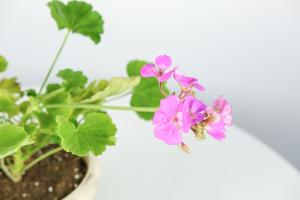Is Conifer Tree a Flowering Plant
When talking about trees, people usually differentiate them as either hardwood trees or softwood trees. The term softwood usually refers to conifers trees, which include familiar species such as pine, spruce, and fir. However, when it comes to the question of whether conifer trees are flowering plants, the answer may not be as straightforward as one might expect.
Understanding Conifers vs. Flowering Plants
Firstly, it is important to understand what separates conifers from flowering plants. Conifers are a group of plants that have evolved to produce seed-bearing cones, rather than flowers. They have needle- or scale-like leaves and are mostly evergreen, meaning they retain their foliage all year round. On the other hand, flowering plants, also known as angiosperms, have evolved to produce flowers, which then develop into fruits that contain seeds. They have broad leaves and can be either deciduous or evergreen.
The Reproductive Process of Conifer Trees
Conifer trees reproduce through a process known as pollination, where pollen from male cones travels to female cones or ovules. Male cones are usually smaller, softer, and produce a lot of pollen, while female cones are larger, harder, and more protected, with each scale bearing one or two ovules. Once pollinated, the ovules develop into seeds, which are then dispersed by wind or animals. This process of reproduction is very similar to that of flowering plants, but instead of flowers, conifer trees rely on cones to carry out the process.
Do Conifer Trees have Flowers?
During the reproductive cycle of conifer trees, some species do produce structures that are commonly referred to as flowers. However, these structures are not true flowers in the sense that they do not have petals, sepals, or other structures that are typical of angiosperm flowers. Instead, conifer flowers are usually small and inconspicuous, arranged in clusters or catkins, and are often found at the base of new shoots or leaves. Conifer flowers also lack a true ovary, which is a defining feature of angiosperm flowers. Therefore, even though conifers do produce structures that can be considered flowers, they are not technically flowering plants.
Conclusion
In summary, conifers are a unique group of plants that differ from flowering plants in their mode of reproduction. While they do produce structures that may appear to be flowers, these structures lack the defining characteristics of true angiosperm flowers. Therefore, it is safe to say that conifer trees are not, technically speaking, flowering plants. This differentiation is important to understand for a variety of reasons, including the study of the evolution and classification of plants, as well as their use in fields such as horticulture and forestry.

 how many times do yo...
how many times do yo... how many planted tre...
how many planted tre... how many pine trees ...
how many pine trees ... how many pecan trees...
how many pecan trees... how many plants comp...
how many plants comp... how many plants can ...
how many plants can ... how many plants and ...
how many plants and ... how many pepper plan...
how many pepper plan...
































